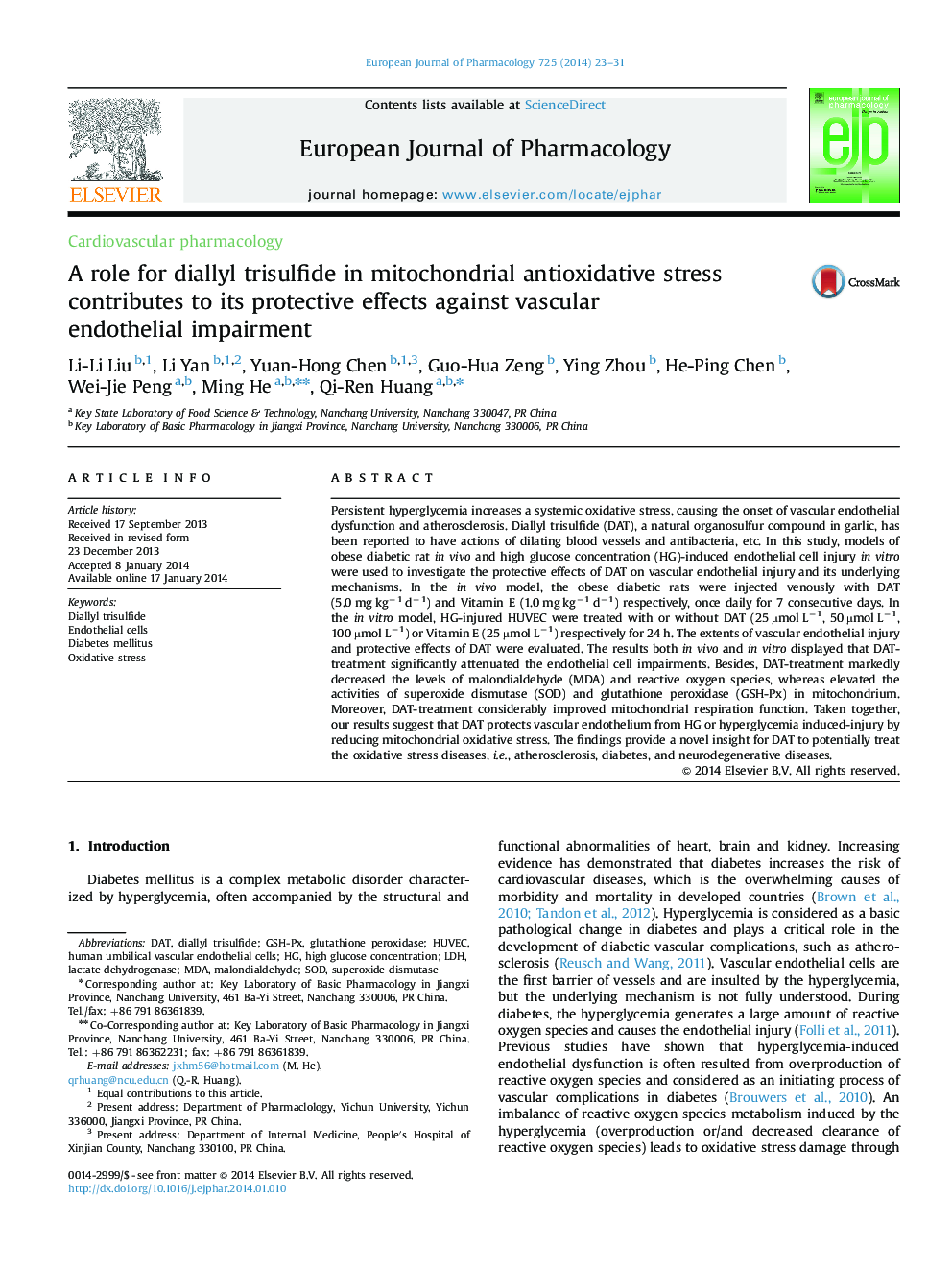| Article ID | Journal | Published Year | Pages | File Type |
|---|---|---|---|---|
| 2531801 | European Journal of Pharmacology | 2014 | 9 Pages |
Persistent hyperglycemia increases a systemic oxidative stress, causing the onset of vascular endothelial dysfunction and atherosclerosis. Diallyl trisulfide (DAT), a natural organosulfur compound in garlic, has been reported to have actions of dilating blood vessels and antibacteria, etc. In this study, models of obese diabetic rat in vivo and high glucose concentration (HG)-induced endothelial cell injury in vitro were used to investigate the protective effects of DAT on vascular endothelial injury and its underlying mechanisms. In the in vivo model, the obese diabetic rats were injected venously with DAT (5.0 mg kg−1 d−1) and Vitamin E (1.0 mg kg−1 d−1) respectively, once daily for 7 consecutive days. In the in vitro model, HG-injured HUVEC were treated with or without DAT (25 µmol L−1, 50 µmol L−1, 100 µmol L−1) or Vitamin E (25 µmol L−1) respectively for 24 h. The extents of vascular endothelial injury and protective effects of DAT were evaluated. The results both in vivo and in vitro displayed that DAT-treatment significantly attenuated the endothelial cell impairments. Besides, DAT-treatment markedly decreased the levels of malondialdehyde (MDA) and reactive oxygen species, whereas elevated the activities of superoxide dismutase (SOD) and glutathione peroxidase (GSH-Px) in mitochondrium. Moreover, DAT-treatment considerably improved mitochondrial respiration function. Taken together, our results suggest that DAT protects vascular endothelium from HG or hyperglycemia induced-injury by reducing mitochondrial oxidative stress. The findings provide a novel insight for DAT to potentially treat the oxidative stress diseases, i.e., atherosclerosis, diabetes, and neurodegenerative diseases.
